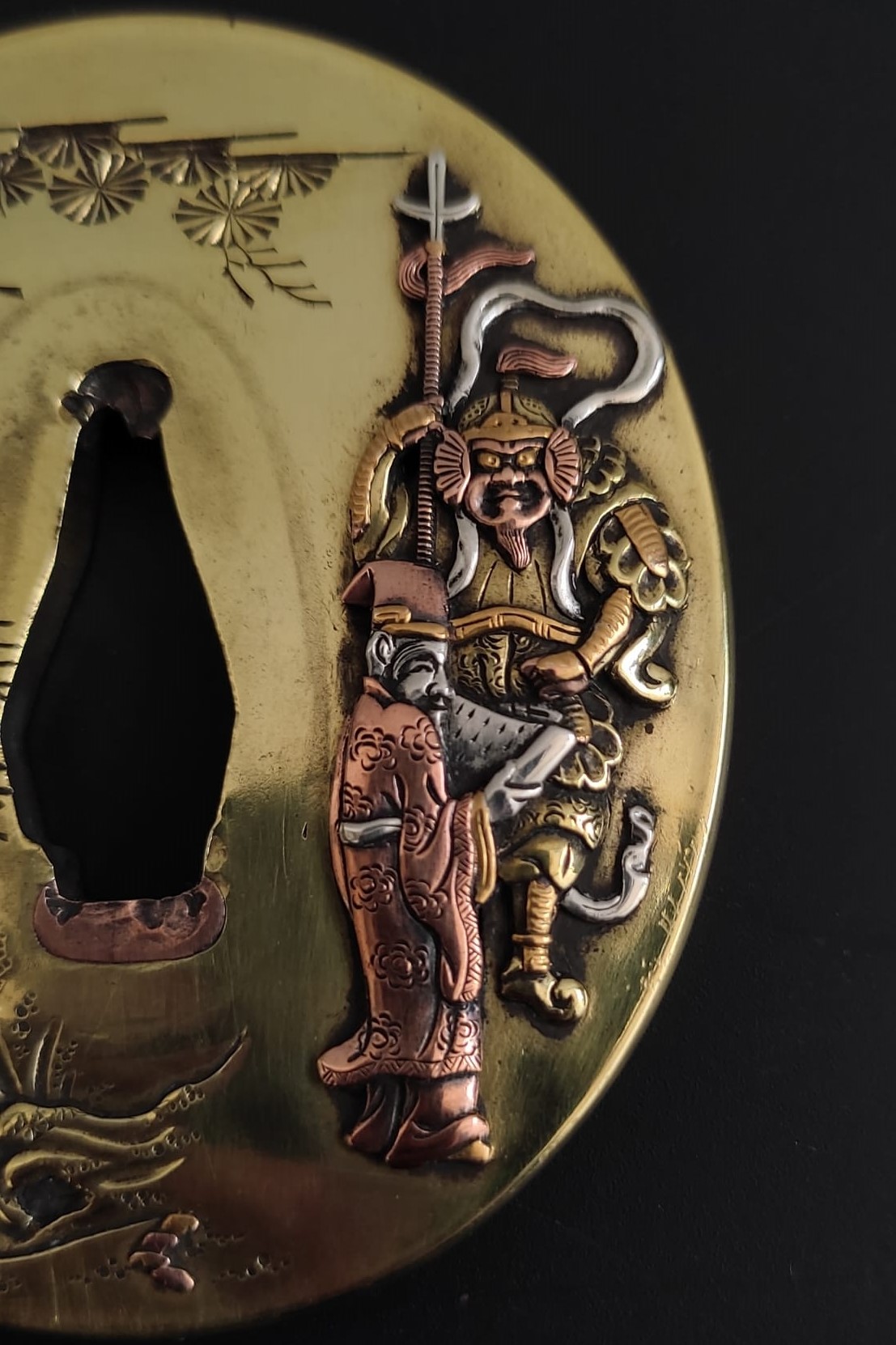Japanese Antique Tsuba: The Hidden Jewels of Samurai Art

In the world of the samurai, every detail had meaning. Nothing in their armor or sword was accidental. The tsuba, the handguard placed between the blade and the hilt of the katana, had a clear purpose — to protect the warrior’s hand. Yet beyond its functionality, the tsuba became a declaration of identity, a miniature canvas where Japanese artistry came alive.
Today, a Japanese antique tsuba is far more than a sword fitting. It is a work of metal art filled with history, spirit, and symbolism — a timeless piece that connects us to Japan’s warrior past.
The Symbolism Behind a Tsuba
Every samurai carried a tsuba that told his personal story. Its design, material, and engravings revealed his clan, beliefs, or aspirations. Dragons represented strength and divine protection; cherry blossoms evoked the fleeting beauty of life; waves and mountains symbolized the eternal harmony between nature and spirit.
The craftsmen, known as tsubako, were not only masters of iron, copper, or shakudō (a copper-gold alloy) — they were poets in metal. Through reliefs and carvings, they depicted Shinto deities, mythological creatures, and scenes from ancient legends.
To observe an antique tsuba is to glimpse the soul of its owner and the essence of the samurai ethos: discipline, respect, and beauty in balance.
Art, History, and Technique in One Piece
Each Japanese antique tsuba was forged using noble materials and methods specific to its school and period. During the peaceful Edo era, as warfare subsided, artisans turned their attention to artistic expression. The result was an age of extraordinary refinement — pieces created not for battle, but for contemplation.
Some tsuba display intricate openwork motifs inspired by nature; others feature gold or silver inlays that shimmer under changing light. The level of detail rivals that of fine sculpture or painting. Over time, each piece develops a patina that enhances its depth and authenticity — the silent signature of centuries gone by.
An Accessible Gateway to Japanese Collecting
Unlike full suits of armor or complete swords, tsuba offer an accessible way to begin collecting authentic samurai art. Their compact size, variety of designs, and attainable prices make them ideal for both newcomers and seasoned collectors.
At Supein Nihonto, every tsuba is carefully selected in Japan through trusted contacts and specialized markets. Each is unique, handcrafted between the 17th and 19th centuries, and reflects the evolution of Japanese aesthetics and craftsmanship.
Whether as the first piece in a collection or the complement to an antique katana, a tsuba embodies the intimate dialogue between steel, spirit, and art.

How to Identify an Authentic Japanese Tsuba
Because modern reproductions abound, it’s essential to recognize the hallmarks of an authentic Japanese tsuba. Key indicators include:
- Natural patina, developed over time, not through artificial aging.
- Handcrafted irregularities, revealing the touch of the artisan.
- Traditional Japanese motifs, depicted with symbolic balance.
- Verified provenance, ensuring authenticity and historical value.
At Supein Nihonto, authenticity is guaranteed. Each antique tsuba is sourced directly from Japan, carefully inspected, and documented before being listed for sale.

Tsuba: The Soul in the Steel
Beyond their decorative beauty, tsuba embody the soul of the samurai — a union of strength and refinement, protection and art. Their silence speaks of centuries of discipline and devotion to form.
For those who admire Japanese culture, aesthetics, or history, a tsuba represents the perfect collectible: a quiet masterpiece that holds within it the spirit of an ancient world.
